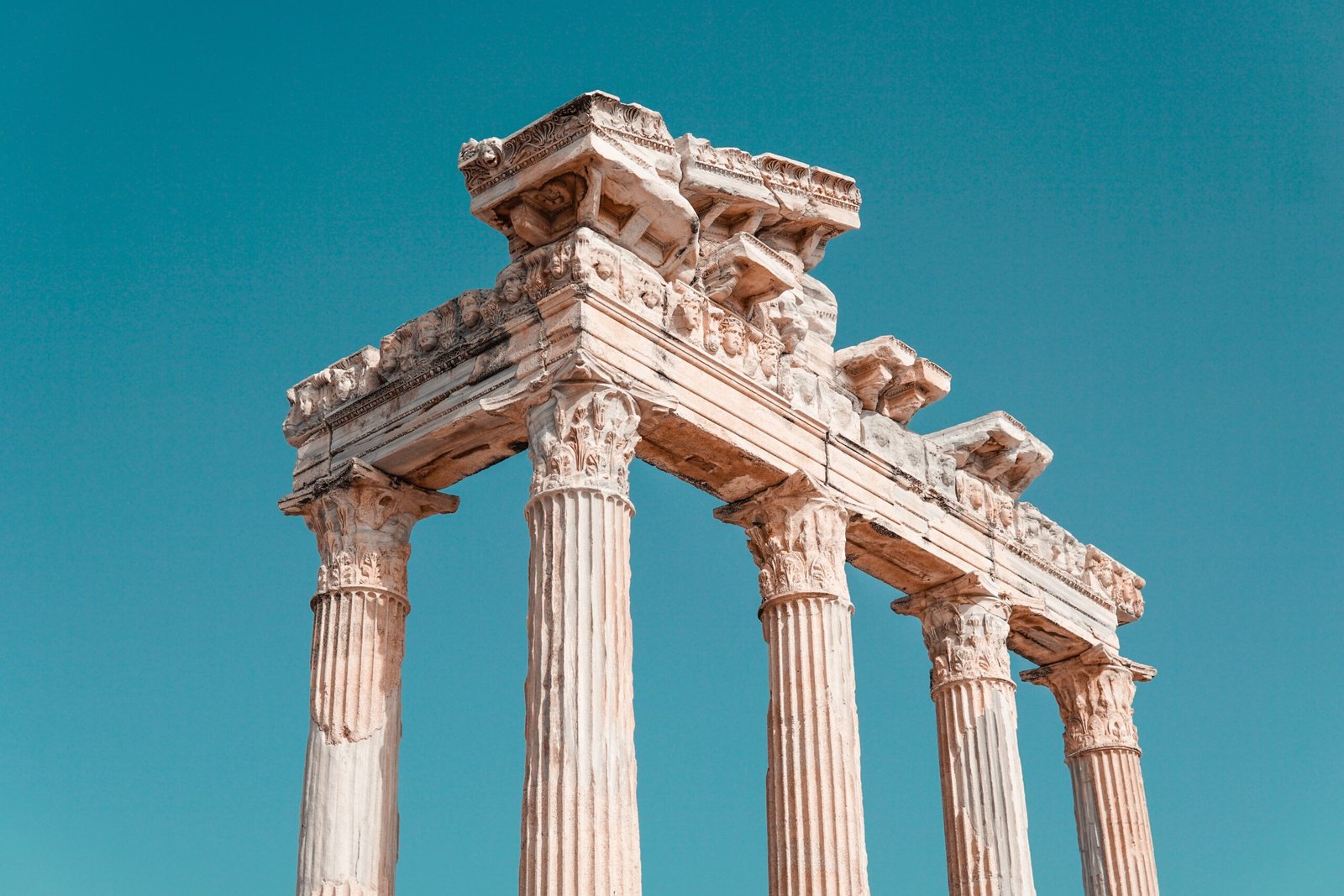Side: Some historians say that the city was settled around the 7th century BC and then came under the rule of the Lydians, Persian, Alexander The Great, Seleucid Empires, Pergamon Kingdom, Romans, Byzantines, and Turks respectively.
Side minted its own coins during the 5th century BC, a sign of strength and richness at that time. In the 4th century, BC Alexander the Great captured the city without any fight, this was a peaceful period for the whole region. In 190 BC, Side has allied with Antiochus III, king of Syria, and his commander Carthaginian Hannibal to fight against the Rhodian fleet, but they lost the naval battle and the city was occupied. In the 2nd century, BC Side became a rich and prosperous city of Pamphylia again thanks to its location and the trade, actually, it was an intellectual and cultural center too. In the 1st century, BC Side was controlled by pirates and turned into a slave market, but with the arrival of the Romans, these pirates had to leave. During the Roman rule, Side lived once more its heydays with its large harbor, trade between Anatolia and other ports of the Mediterranean, its important slave-trading market and so on. Under Byzantine rule, it was a well-known Bishop center as well. Arab raids in the 7th century AD destroyed Side and its inhabitants abandoned the city. Side was not a settlement during the Seljuk nor Ottoman periods.
Side: What its like today
Today excavations and studies show that Side was a very important city in the Mediterranean for several centuries. It was surrounded on all four sides by high walls to protect the city from both land and sea. The main gate of the city was built during the Hellenistic period to the east and it was protected by two towers. There were two main streets in the city, with columned porticos and shops behind them.

Photo by Mert Kahveci
The Nymphaeum, a large monumental fountain, was built just outside the city wall and opposite the main gate. It had a large pool with ornamented niches, from which the water was flowing out. The city had also a perfect sewage system with terracotta pipes and vaults under the streets.
The square-shaped (100 x 100 meters or 330 x 330 feet) Agora, the market place, is surrounded by porticos on four sides with shops under. It’s located opposite the museum today. On the south-west corner of the Agora adjacent to the theater, there was a public toilet with a capacity of 24 people, one of the best examples of Roman latrines. A circular temple in the middle of Agora was dedicated to Tyche, the god of Fortune. This Commercial Agora was connected to another square-shaped but smaller agora which was called State Agora and used both for state affairs and the slave trade. There was also a Gymnasium surrounded by porticos and composed of three halls, just to the south side of the Agora.
Other areas to visit near Side
The theater is a unique example in Anatolia because of its plan and construction type and is one of the best-preserved ancient theaters in the world. It was built in the 2nd century AD on arches instead of a slope like in other Roman theaters elsewhere. It was formed by three sections: orchestra, scene, and cavea with a capacity of 20 thousand spectators approximately so this made it Pamphylia’s largest theater. Besides regular performances, also gladiator and animal fights were organized in the theater. During the early Byzantine period, it was used as an open-air church too by local Christians.
Side has great temples from the Roman period. Especially two of them are located by the sea near the harbor; one was dedicated to Athena and another one to Apollo. They were entirely built of marble in the peripteros plan with Corinthian style capitals. In the 5th century AD a large Christian basilica was built in front of these temples, which were destroyed during the Arab raids in Asia Minor around the 7th century. Restoration of the temples is still being carried out. Another important temple, dedicated to the god Men (god of the moon), was built by the end of the 2nd century AD to the east of the arcaded street. It has a semicircular base with Corinthian column capitals. And finally, another temple, probably belonging to Dionysus, was built between the arcaded street and the theater.
A huge (40 x 50 meters or 130 x 164 feet) Roman public bath lies on the arcaded street as well and is well preserved. There are also big cemeteries (Necropolis) outside of the walls and aqueducts used to bring water to the city from about 25 kilometers (15 miles) away. Side has been excavated by archaeologists since 1947 and excavations continue also in the present day.
Today, Side is a major tourist resort with its sandy beaches and great hotels. It offers history, sea and sun vacation, and many water sports activities. Nearby Aspendos theater and Perge site, Manavgat river, and the city of Antalya can be easily reached in case you’re staying in Side.
Airport Name: Antalya Airport
Address: Antalya Havaalanı Dış Hatlar Terminali 1, 07230 Muratpaşa/Antalya, Turkey
Code: AYT
Elevation: 51 m
Phone: +90 242 444 74 23
Serves: Antalya, Alanya, Kas, Kalkan and Surrounding area
We highly recommend booking international and domestic flights with Turkish Airlines. Visit www.turkishairlines.com for prices and times.
If you wish to travel by bus or car please give the details of your journey so we can recommend a local transfer service. You must allow 3 days for us to make suggestions.
All companies we recommend are licensed by TURSAB. It is merely a recommendation we do not take any responsibilities for any of the services recommended on this website.
